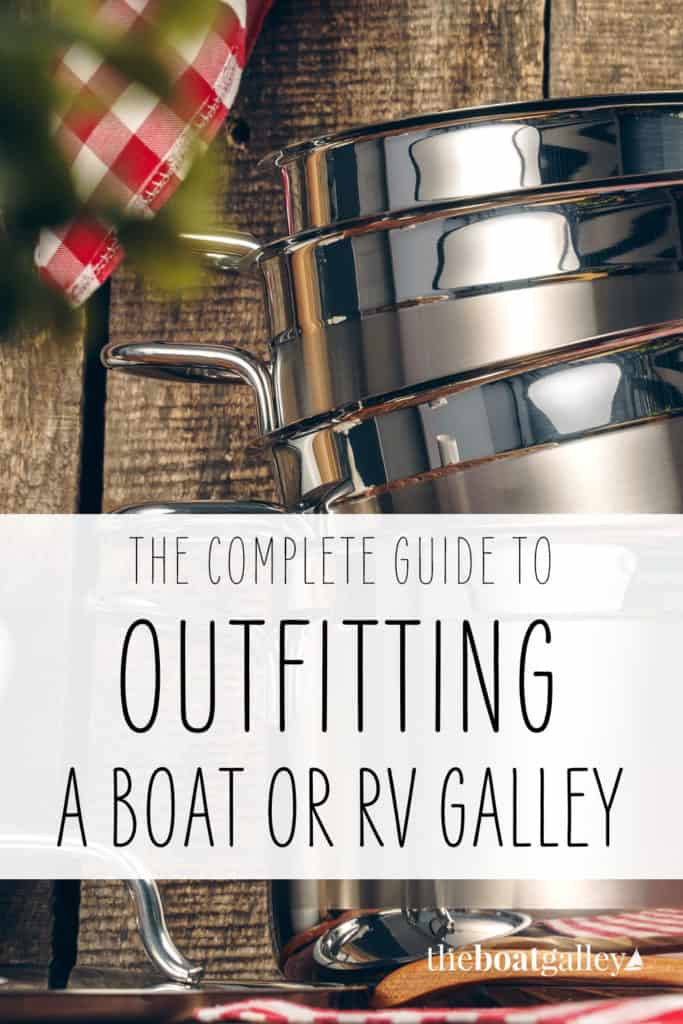
When buying galley equipment, there are at least 13 important points to consider before making a purchase. Here’s a buying guide to help sort out what will work best for you:
1. Do I really need it? With limited space aboard all but the largest boats, think about whether you use something often enough to justify the storage space.
2. Can I use it in the space I have available? Workspace and cooking space is generally smaller in a galley than a house kitchen. Counters and drawers aren’t as deep, the sink isn’t as large, the oven and stovetop are smaller. The cubby for your dishes may not be large enough for some of the “super-size” plates sold. I learned to measure any space before I went to the store!
3. Can I stow it? Everything aboard has to stow securely whenever the boat moves. Will it fit in the locker space available? Will it need anything special to keep from breaking or scratching? Another big issue can be if something is likely to be noisy when stowed and what I can do to keep it quiet, such as padding with pieces of fleece.
4. Will it work when I need it to? Things that don’t do what they should are enough of an annoyance when living ashore, but are close to a catastrophe if you’re 100 miles or more from a replacement. To me, “working when it needs to” includes things like can openers not breaking as well as food storage containers that don’t leak with the motion of the boat.
When I’m buying galley equipment I’m unfamiliar with, I look for items with a number of reviews by real-life users and pay close attention to poor reviews. I want to know why they dislike the product; then I can decide if it will also be a problem for me. Unfortunately, it’s hard to find reviews that talk about using kitchen equipment on a boat — and one of my purposes in developing a website with recommendations specifically for boat galleys.
5 – 7. Is it break-resistant? Rust-resistant? Non-slip? These are all important considerations in the marine environment. It’s often cheaper in the long run to buy higher quality initially. I don’t just blindly purchase (or recommend) the higher cost alternative on the assumption it’s better, but look at factors such as scratch and break resistance, rust resistance, tendency to tip over, and the ability to hold onto it as the boat moves.
8. What’s it made of? In a lot of ways, this is related to the questions above.
- High quality, heavy stainless steel is always a favorite of mine for galley equipment. It is highly rust-resistant and won’t break unless you really abuse it. In pans, the heavier the stainless the better — it’s less likely to warp as it heats and cools, and it will also conduct heat more evenly.
- Soft (not brittle) plastic is also a good choice for mixing bowls and serving dishes, although markings (such as on measuring cups and spoons) wear off quickly. I greatly prefer stainless measuring cups and measuring spoons with markings etched or stamped in.
- Glass can break, and I generally avoid it onboard since I’m always barefoot. If you do have glass aboard (it’s hard to totally avoid it), choose thicker pieces over thinner. They may cost more initially, but you’ll have far less breakage. This is particularly important if you decide to use real glass drinkware and especially for stemware — delicate stems look beautiful but have no place on a boat.
- Polycarbonate plastic (Lexan) is a popular alternative to glass. However, while it is quite shatter-resistant, it scratches easily. In just a year, glasses will start looking worn — but they’re still serviceable. Even with polycarbonate, you need to pay attention to sturdiness, as I’ve had the stems of several polycarbonate wine glasses snap at their narrowest point.
- Break-resistant dishware has been around for years. I’m not a big fan of melamine dishes if you’re living aboard and using them daily, as my experience has been that they quickly show wear. They are great for occasional use, however, as they’re lightweight (always a plus on the boat), heat and shatter-resistant and come in all sorts of wonderful designs. They can’t be put in the microwave, though — something I read on the back of my dishes only after I burned one to a crisp. For daily liveaboard use, my preference is Corelle — it’s hard to break, looks and feels like “real dishes,” comes in lots of designs and can be used in the oven and microwave — or tempered glass dishes, which are similar to Corelle except they have less of a tendency to shatter.
10 – 12. Will it help me conserve power? water? storage space? No boat, it seems, has enough electricity. Therefore, I favor manual tools and non-electric options. Ease of cleaning plays a big part in water conservation: nonstick pans and items that don’t have little cracks and grooves that are hard to wash by hand are best. Nesting pans, bowls and storage containers conserve space.
13. Affordability. I don’t blindly purchase the most expensive choice, figuring that it must be the “best,” nor do I always go for the cheapest on the grounds that it’s all I can afford. To me, affordability is more of a long term consideration: what will be the least expensive in the long run? Will the item last? Will it do what I want it to?
Read Next

Carolyn Shearlock has lived aboard full-time for 17 years, splitting her time between a Tayana 37 monohull and a Gemini 105 catamaran. She’s cruised over 14,000 miles, from Pacific Mexico and Central America to Florida and the Bahamas, gaining firsthand experience with the joys and challenges of life on the water.
Through The Boat Galley, Carolyn has helped thousands of people explore, prepare for, and enjoy life afloat. She shares her expertise as an instructor at Cruisers University, in leading boating publications, and through her bestselling book, The Boat Galley Cookbook. She is passionate about helping others embark on their liveaboard journey—making life on the water simpler, safer, and more enjoyable.
Here’s your “Quick Start” to everything you need to know when living on a boat:

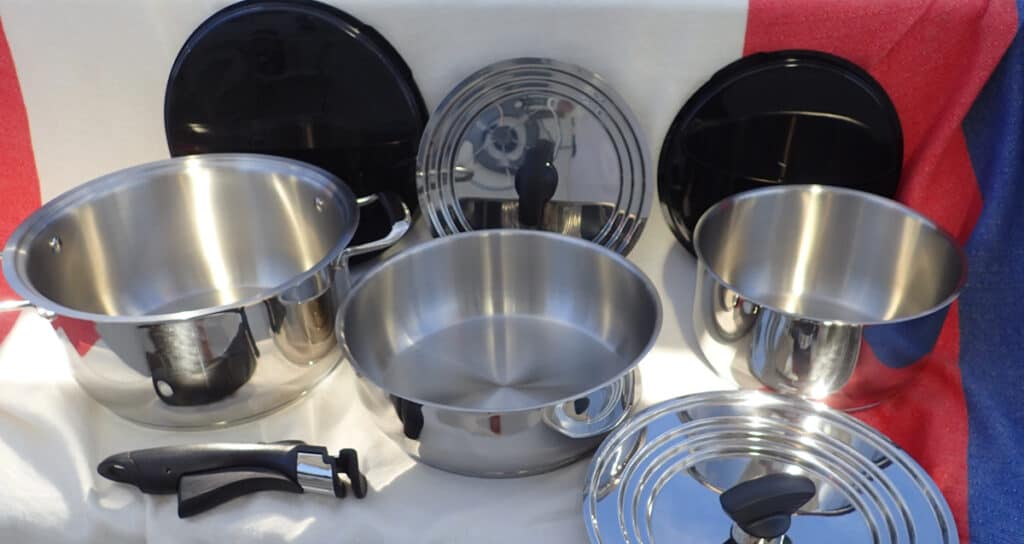
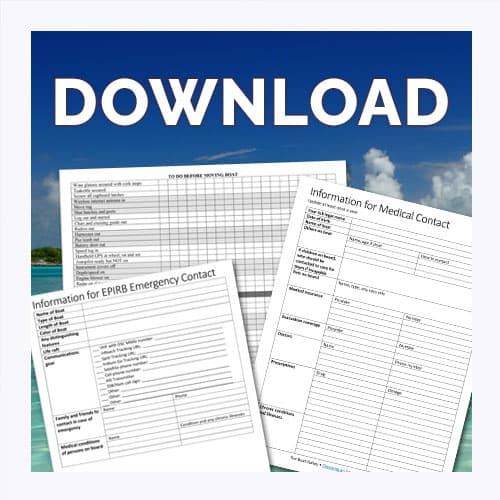


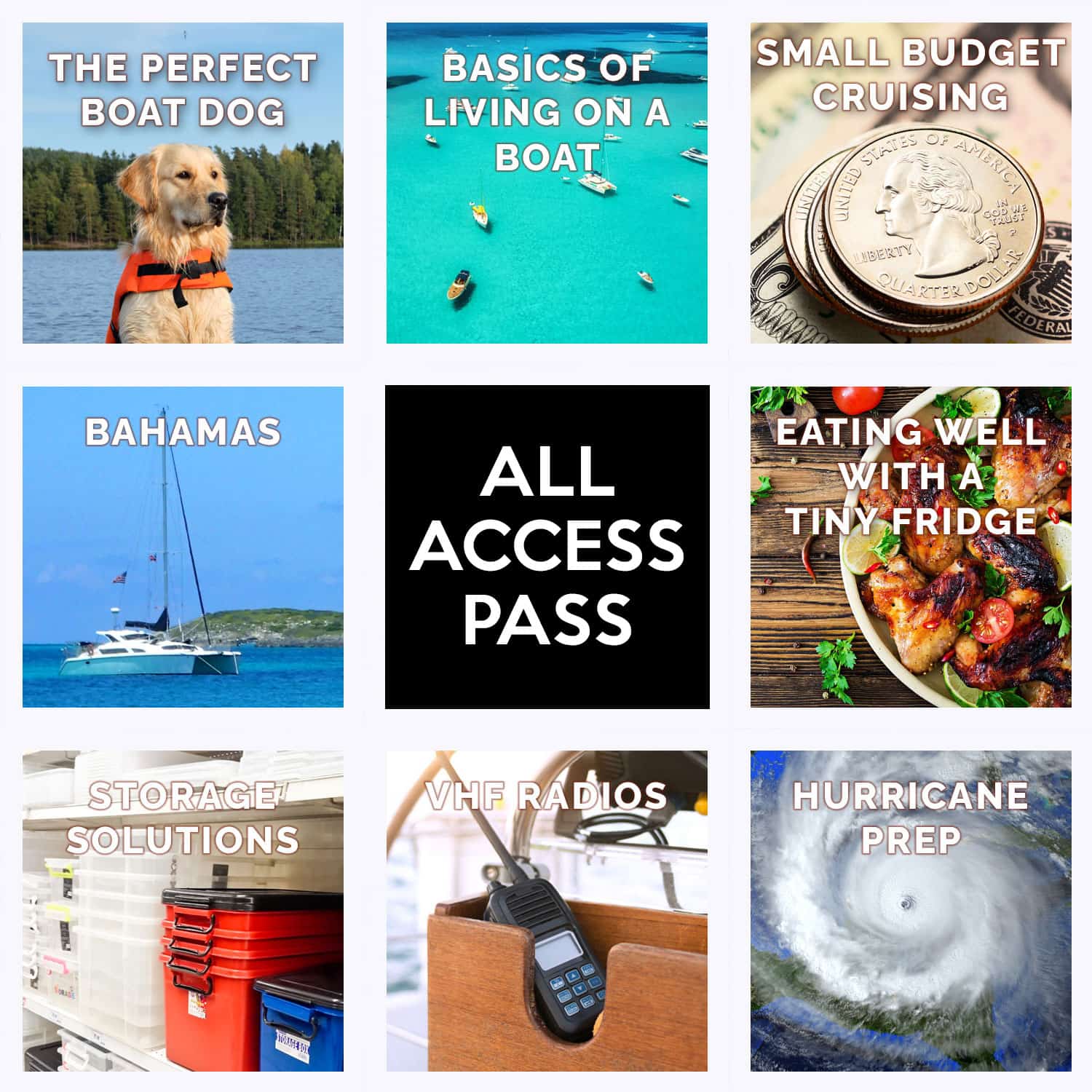
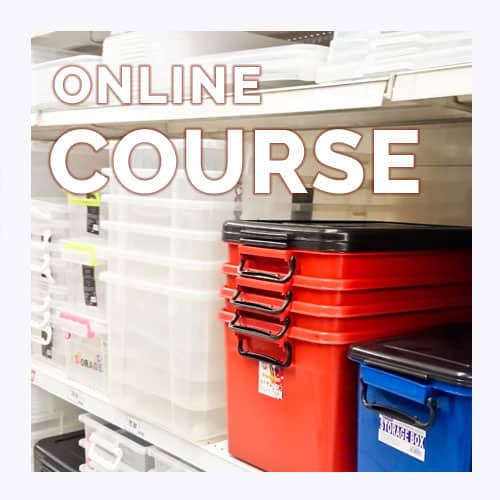


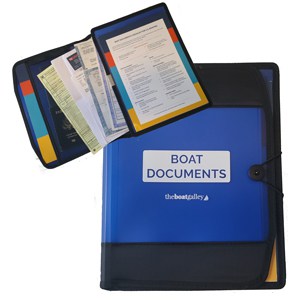

Dave Skolnick on Auspicious says
> Wood harbors bacteria
I haven’t found any credible, peer-reviewed scientific data to support this position. In fact there are some indications that wood cutting surfaces may be better than plastic with respect to bacteria growth, particularly if a high temperature dishwasher isn’t available. I use a vinegar-water solution in a spray bottle to clean and disinfect my wooden cutting boards (one for meats, one for chicken, and one for veg).
> Glass can break
Certainly true, but I have been unwilling to give up glass for drinking from – glass for large–well-glasses and crystal for wine and liquor. In six years aboard I have broken only one piece of crystal.
Milan says
I use only one cutting board for everything since I can remember and never had an issue. So did my mother and everybody else before her. I think it is just an invention of these new age chefs wanting to be fancy.
MacGyverRI says
Wood cutting boards should always be treated and kept oiled after cleaning with Mineral Oil ONLY! Never use Corn Oil, Olive Oil, Veg. Oil etc. as these Oils will go “rancid”.
Rob B says
Hi Carolyn,
First I want to compliment you on a great web space. I do most of the cooking when we are out, mostly because I love to as it takes me to my past and my back country days. Your site has been a great source of info and I am looking forward to your cookbook.
I started using an Omnia stove top oven back in the 70’s when I was backpacking. If I had plans for a base camp while climbing/exploring in areas of the PNW I would take this great little oven. There was nothing like baking up something for dinner or breakfast.
When I transitioned to sailing I could only offered the small boats where I used my camp stove and Omnia. I was able to take a varity of raw goods and bake some amazing food like cheesy scalloped potatoes, blackberry crumble, lasagna and breads.
We now have a 30 footer that came with a 2 burner stove and I looked at installing a unit with an oven. We would loose some precious storage and I would have one more project on my list. Decided the Omnia is still the best solution.
I just wanted to share this with you so you could add your thoughts and recommend some optional equipment for space challanged cruisers.
Best Regards,
Rob B
s/v Otter
Carolyn Shearlock says
Thanks, Rob! I’ve put this on my “future article” list. For anyone who wants to take a look at one in the meantime, they’re now being sold by Sea Dog Boating Solutions.
-Carolyn
Jimmy Stewart says
As far as saving space is concerned, one way is for authors to have their wonderful books I want to buy available on Kindle or IBooks or both! I am at the point where I cannot get anymore books unless they’re in electronic form.
Thank you,
Jimmy
Carolyn Shearlock says
The Boat Galley Cookbook will be available in Kindle and many other electronic formats — the print ones shipped early, but the others are coming very soon — as quickly as they make their way through Amazon’s process!
Thanks! — Carolyn
Cap'n Seana says
Bamboo cutting boards clean with vinegar dish soap and do not mind dunking in 35 part per thousand sea water and a rinse in fresh. ( I am a microbiologist and have never found anything that scares me about this…and yes, I looked).
I have stainless, and some cast iron that gets heavy use. Seasoned properly, cast iron is durable and is simple to clean. The more one uses it… the easier cleaning in salt water becomes. Rust ceases to be a problem once it has a good coat of carbon. It can be had, cheap, at maquilledora outlets. You do have to keep away from your compass when not in use, 🙂
Maryanne Grady says
I am pretty new to this so I have actually taken your advice pretty seriously when collecting for my little galley. What you are offering makes a lot of sense.
The Boat Galley says
Maryanne, I’m so glad you’re finding it helpful and practical. Thanks!
Dave Skolnick (S/V Auspicious) says
I agree with Cap’n Seana. Good, heavy cast iron will always have a place on my boat. I have a couple of square pieces on Auspicious – one flat and one with grill ridges. They work great on the stove, in the oven, and even on the grill.
Lisa Russo says
You put out such helpful information. My only complaint is I don’t seem to have enough time to read all of those great posts!!! Thanks for all you do.
The Boat Galley says
Thanks! Glad you find them helpful!
Virginia Putala says
Cordell dishes can shatter and shards of glass fly if you bump them or they fall they may not shatter at the time but shatter later or even in a cabinet
Aaron Beurle says
Carin LB
Debbie Adams says
.
Gerben Van Duyl says
Cooking Utensils! I have been breaking them – on purpose – to test which ones will survive. Guess which ones are indestructible and a real pleasure to cook with: the $0.99 each utensils from IKEA, the SPECIELL range: turner, ladle, tongs, wok turner, spoon and pasts server. See http://www.ikea.com/us/en/search/?query=SPECIELL
SY Neraida says
It was a previous blog by The Boat Galley that made me purchase the Joseph Joseph stacking bowls for my galley – I haven’t looked back since, I use them everyday, they’re brilliant 🙂
The Boat Galley says
Glad to hear it!
Carol Vachon says
The nesting pan link doesn’t seem to be working
The Boat Galley says
Thank you! I fixed it, and here’s the correct link: https://theboatgalley.com/pots-pans-boat/
Rosalind Franks says
Have you tried the Swedish dishcloths? I got some on Amazon a couple of weeks ago. they work very well as a supplement to the lunatec dishcloths. Very good for wiping the counters and tables.
Bob Ashforth says
I have the Magma (non-induction) nesting pot set and added the wok and colander as well. The non-stick surface is unbelievably good, the best I have EVER seen!
My single favorite galley thang, though, is the Joseph & Joseph UniTool: http://amzn.to/2GQCO17
I ditched almost all of my utensils, exceptions being such things as a small whisk and a hand-held grater. The silicon-edged end of the Uni-Tool seems to have been made specifically to scoop the grounds out of my Linkyo double-walled stainless-steel French press, gets almost all of them! 🙂
One gadget which has helped me conserve a lot of water is the Lunatec AquaBot, which I found through this site. My current boat needed some work, and at the moment still doesn’t have running water, so rinsing all of my dishes and cookware with a pint of water is very helpful.
I’ll join the rest of the chorus in thanking you for this site, Carolyn. It’s right up there with my Calder and Casey reference books.
Sharon says
Hi Carolyn!
We just purchased our first boat as a couple. Yeah it took a few years 😉 , It’sa 34′ 7″ Chris Craft. We are really excited. I am so very glad I have found your web page. I have learned so much just reading what you post. It has helped me greatly in knowing what to bring along, what not and if I want to do it my way, I can. Thanks so much and have a great season on the water!
Carolyn Shearlock says
Congrats on the new boat! You’re going to love it!